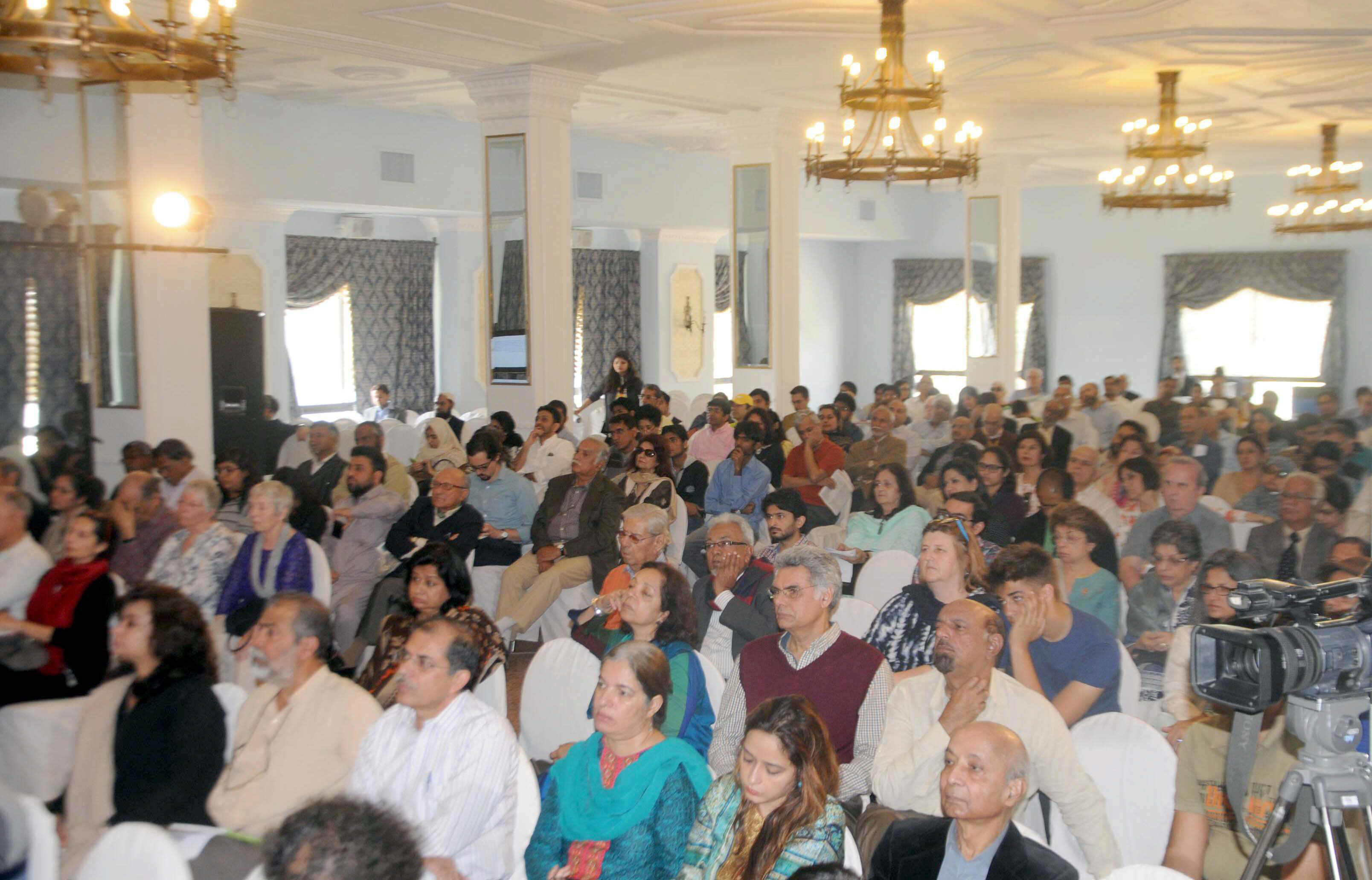
KARACHI:
With an estimated 7.3 million children out of school in Sindh, the constitutional right to education is caught between the political enthusiasm to enact educational laws and the political will required to implement them.
On the third day of the sixth Karachi Literature Festival on Sunday, Institute of Business Administration dean and director Dr Ishrat Husain and other educationists, including Dawood Foundation CEO Sabrina Dawood and Oxford University Press managing director Ameena Saiyid, spoke at a jam-packed session dedicated to discuss the ‘Constitutional Right to Education: From Access to Quality Learning for All’.

Moderator Baela Raza Jamil, programmes director at the Idara-e-Taleem-o-Aagahi, set the tone of the discussion as she drew the panel’s attention to the Sindh Right of Children to Free and Compulsory Education Act that was passed by the Sindh Assembly on February 13, 2013.
“The law declares free and compulsory education a fundamental right for all children between the ages of five and 16,” said Jamil. “But two years on, the provincial government has yet to introduce the mechanism to implement this law.”
Former education minister and social activist Zobaida Jalal couldn’t agree more with her. She argued that the politicians sitting in the legislature could get pleasure from the feel-good factor in making such laws, but the fundamental divergence in the implementation part doesn’t let the citizens access the benefits. “It is unfortunate that we fail to see any improvement [in the education indicators] despite having so many laws and policies as well as affirming the state’s responsibility in this context.”
While identifying the lacunas in the implementation of the educational laws, Dr Husain asserted that the unavailability of resources had not been an issue as it was often portrayed. “Strengthening the education sector has very much to do with governance and management which, unfortunately, we fail to see in this country,” said Dr Husain. “Likewise, the public education system in the province is reflective of this bad governance.”
Picking on the ever-changing government policies, Dr Arfa Sayeda Zehra, scholar and teacher for over 40 years, quipped in her trademark witty style that even the prominent characters of the Pakistan Movement get changed in our Pakistan Studies textbooks every time the government changes.
Earlier, Jamil also provided an overview to the current state of education through the Annual Status of Education Report 2014. Jamil said that the Sindh government manages to enrol nearly half of the school-going-age children at the primary-level of education, but even around 77 per cent of that half fail to continue education till high school.
“The staggering drop-out rate is due to the fact that for every 10 primary schools available in the province, there is one middle school,” she said. “These disappointing results of the recent survey further increase the demand for the implementation of the constitutional right to education.”
Published in The Express Tribune, February 9th, 2015.





























































COMMENTS
Comments are moderated and generally will be posted if they are on-topic and not abusive.
For more information, please see our Comments FAQ